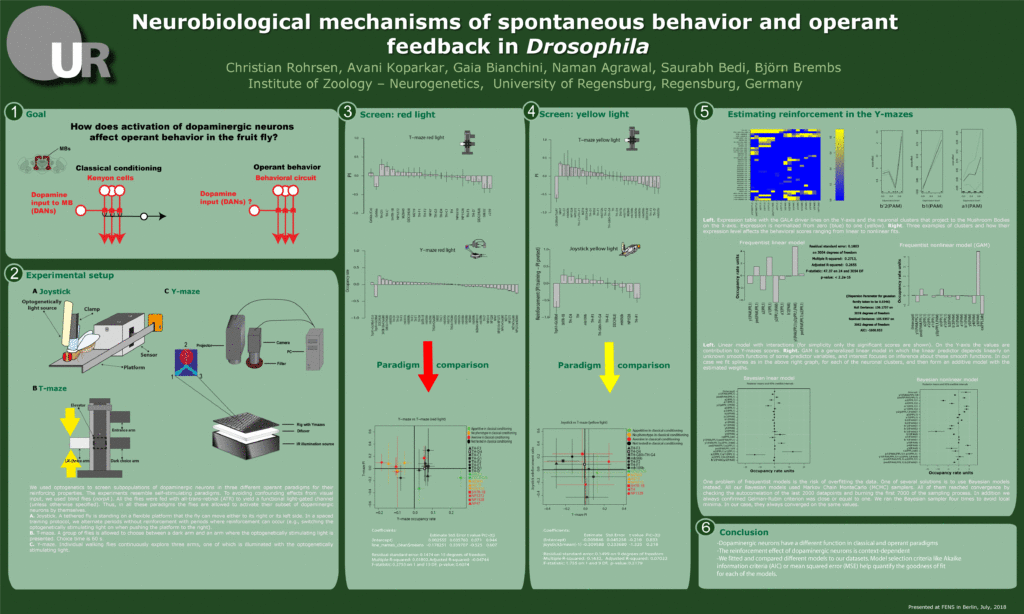Joystick Results for 2-minute-testing
on Tuesday, May 30th, 2023 1:31 | by Luisa Guyton
The following figures show the results of the joystick test using the same test line as before. In addition, the flies were fed not only ATR but also 3IY (3-iodo-L-tyrosine), an inhibitor of dopamine synthesis. This was done to determine whether the previously observed effect was due to dopamine alone and could therefore be suppressed by the inhibitor, or whether other factors also influenced the flies’ behaviour in the joystick test.
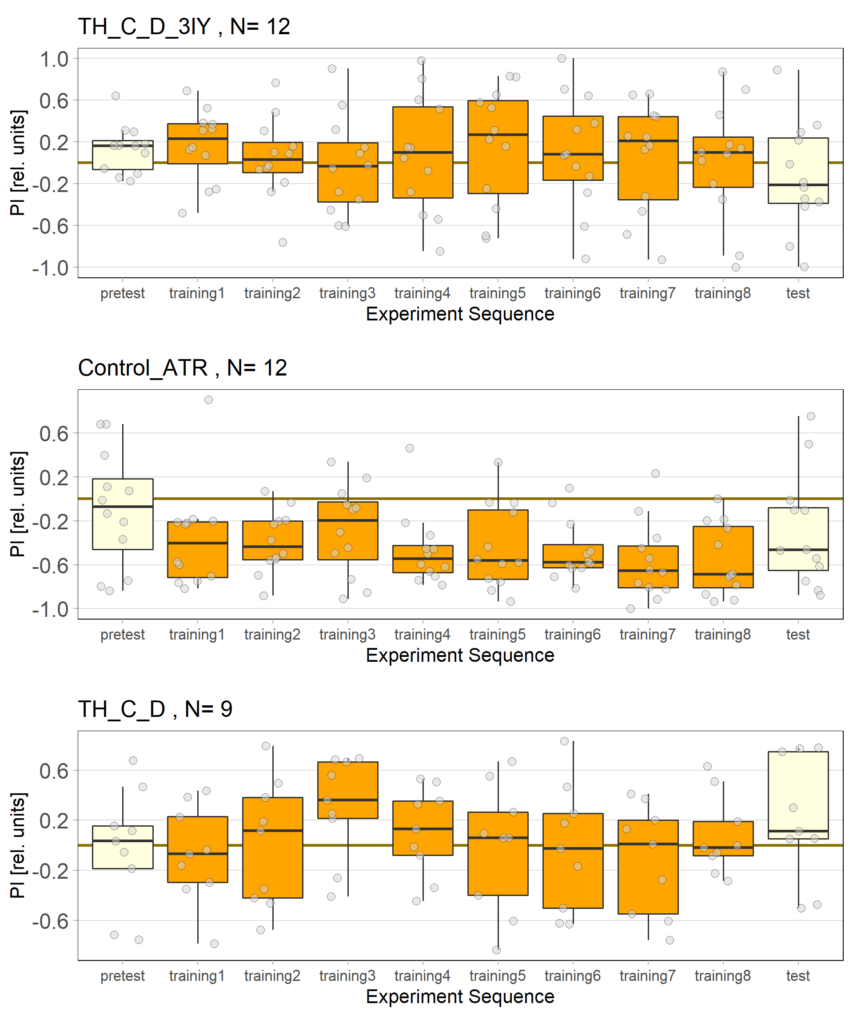

Category: Optogenetics | No Comments
Red light Joystick Results
on Monday, April 3rd, 2023 12:33 | by Luisa Guyton

Category: Optogenetics | No Comments
Yellow light Joystick Results
on Monday, March 27th, 2023 11:57 | by Luisa Guyton

Category: Optogenetics | No Comments
Update: Red light Joystick results
on Saturday, March 18th, 2023 1:28 | by Florian Hierstetter

After the first full week of testing the three different fly lines with red light, we have analyzed the results. We are now able to provide a further update on our findings.
While the effect for the control groups seems to stay consistent with our previous findings, the effect for the positive control has weakened and is closer to the strength measured in previous experiments. We utilized the norpAP24;Gr28bd+TrpA1>Chrimson line for both our positive and negative controls.
Furthermore, the experimental group, which previously favored red light in the post-test, showed a more varied and inconclusive profile. We will need to conduct further testing to determine whether the previously observed effect was simply caused by the small sample size.
Another important discovery was the necessity of feeding the flies sugar water 5-10 minutes before the experiment in order to maintain their activity levels. This way the flies will be identified as a valid data point by the R-script and will ensure more and more accurate data. It is important to note that we will implement this feeding process in all future experiments to ensure consistency and accuracy of the data collected.
Category: Optogenetics | No Comments
Red light Joystick Results
on Tuesday, March 14th, 2023 8:57 | by Luisa Guyton
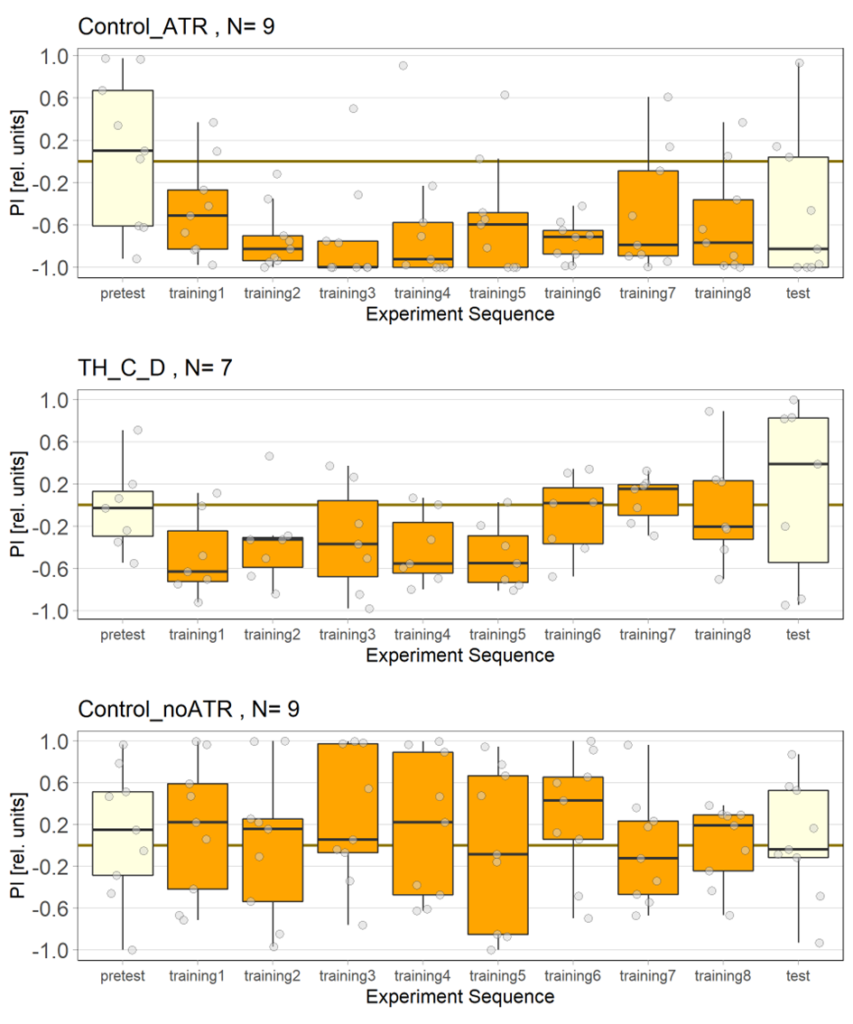
The light used is red and has an intensity of 400 to 470 lux, the LEDs have a voltage of 7.5 volts. The control flies observed seem to show a stronger effect than in previous tests, which could be due to the use of a thinner fishing line (0.6 mm), which is easier to place correctly in the clamp of the joystick machine.
For the negative and positive control we used the line norpAP24;Gr28bd+TrpA1>Chrimson.
Category: Optogenetics | No Comments
Aslıhan Enes Red Light T-Maze Results
on Monday, September 5th, 2022 10:15 | by Aslihan Dilara Gülay



Results for Red Light T-Maze experiments.
Category: Optogenetics | 1 Comment
Aslıhan Enes Yellow Light T-Maze Results
on Monday, September 5th, 2022 10:12 | by Aslihan Dilara Gülay



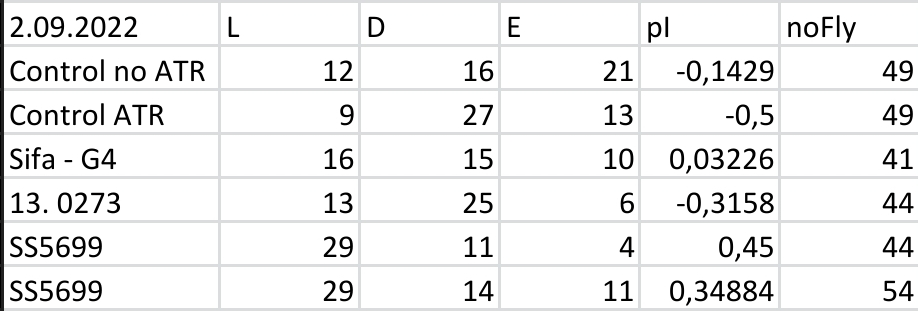
Results for Yellow Light T-Maze experiments.
Category: Optogenetics | No Comments
Positive controls in joystick optogenetics
on Tuesday, March 31st, 2020 7:40 | by Björn Brembs
I’ve started rescreening Christian’s most consistent dopaminergic lines with the positive controls at the joystick machine, to see if everything works. These flies express the optogenetic channel Chrimson in Gr28bd and TrpA1 heat sensitive neurons, so they should use the joystick to switch the light off.
I tested three rounds of three flies each and I got the impression that it worked while I was looking at the flies. The data didn’t look that great, however:
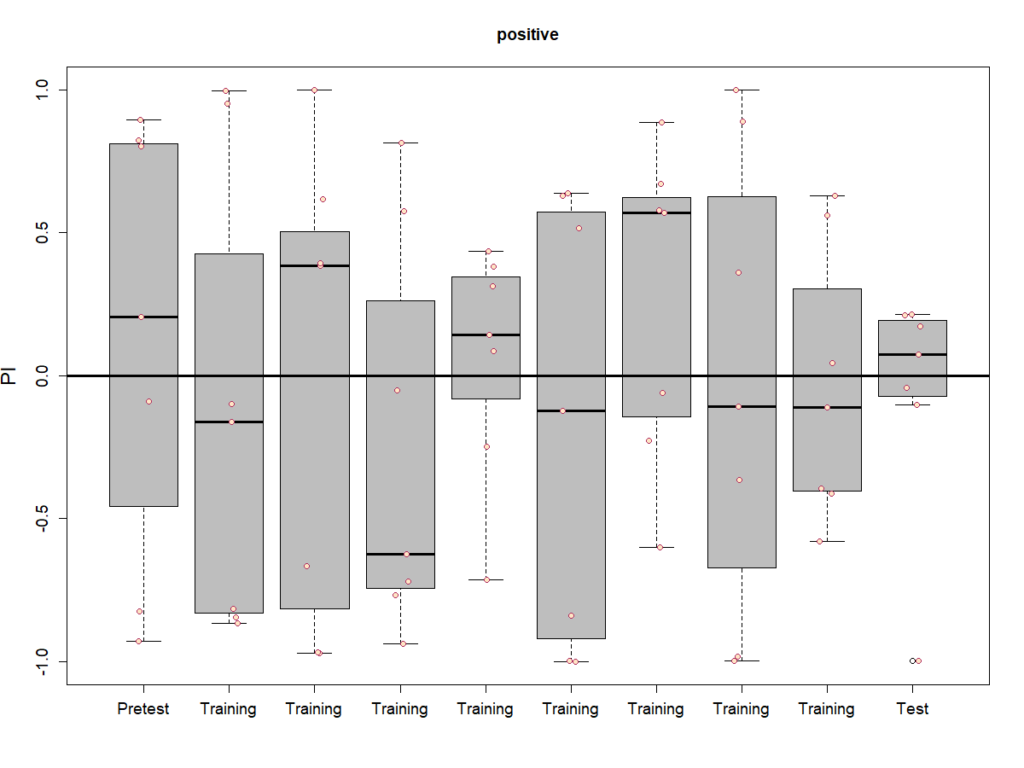
Setting up the experiments, I noticed that the middle setup didn’t really focus the light on the head of the fly very well. This shows in the raw performance index data:

The two middle flies (row #2 and #8) have positive preferences, but never avoid the light, while nearly all other flies do avoid the light to various extents, even if they start out with a positive preference. So I deleted these two flies to see how the data would look then:
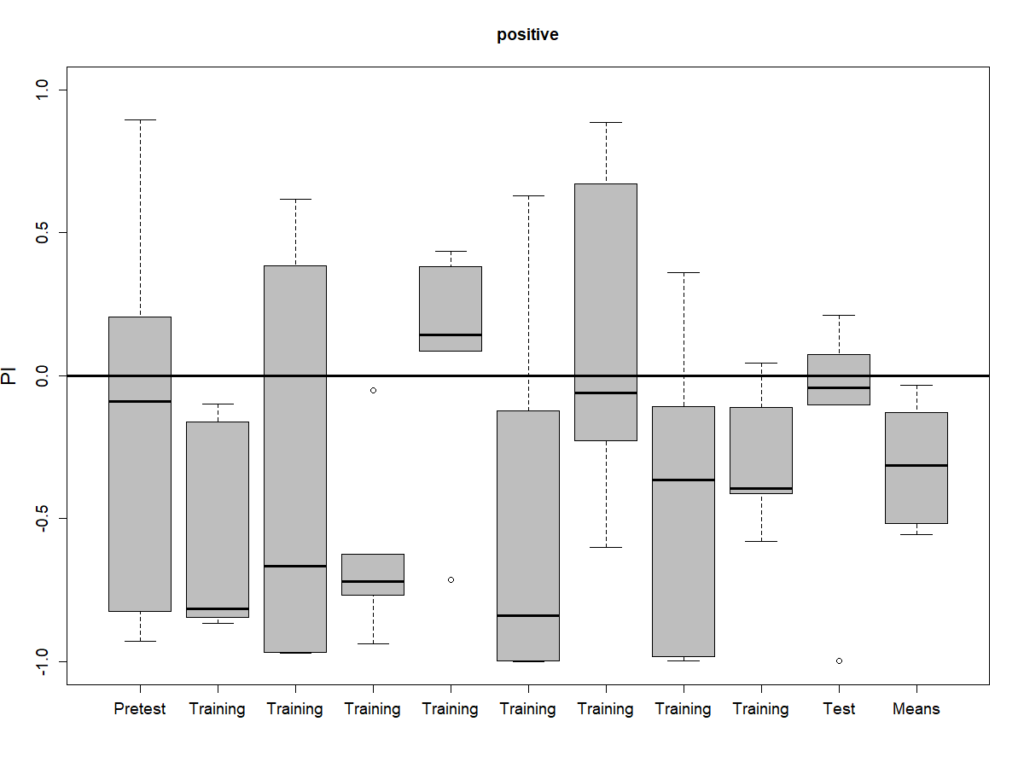
I decided that this should be good enough. I improved the middle setup to focus the light better on the fly’s head. Hopefully it will improve the PIs of the flies placed there now.
Category: Optogenetics | No Comments
FENS poster (link for students)
on Thursday, February 14th, 2019 11:21 | by Christian Rohrsen
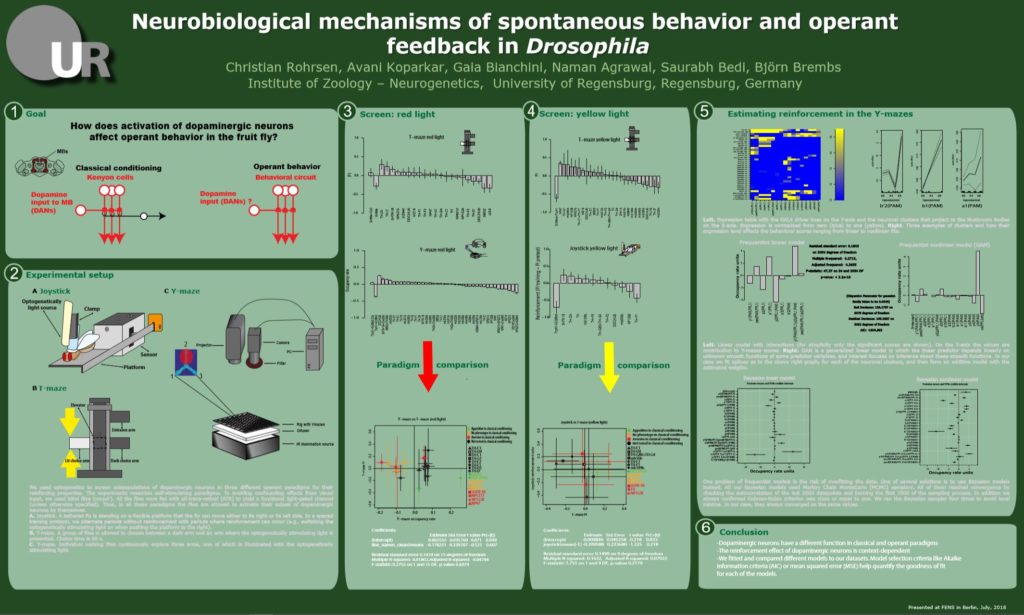
Category: Uncategorized | No Comments
Role of dopaminergic neurons in operant behaviour
on Friday, July 27th, 2018 3:54 | by Gaia Bianchini
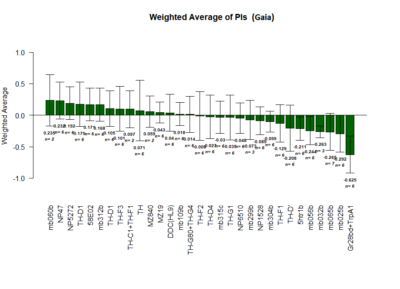
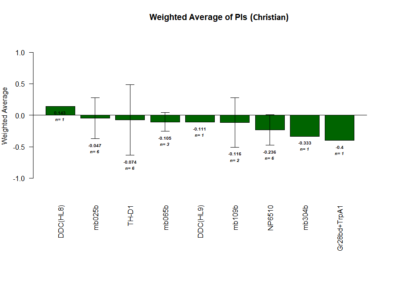
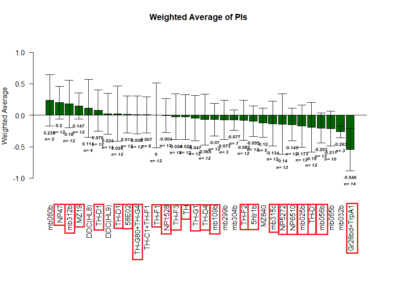
Positive Control: Gr28bd-G4, TrpA1-G4
Parameters: Light: intensity (500 Lux side, 1000 Lux bottom); frequency = 20Hz; Delay = 1 ms; Duration = 9.9 ms; volts = 6.4
Red lines: completed
mb025b: not selected against tubby
